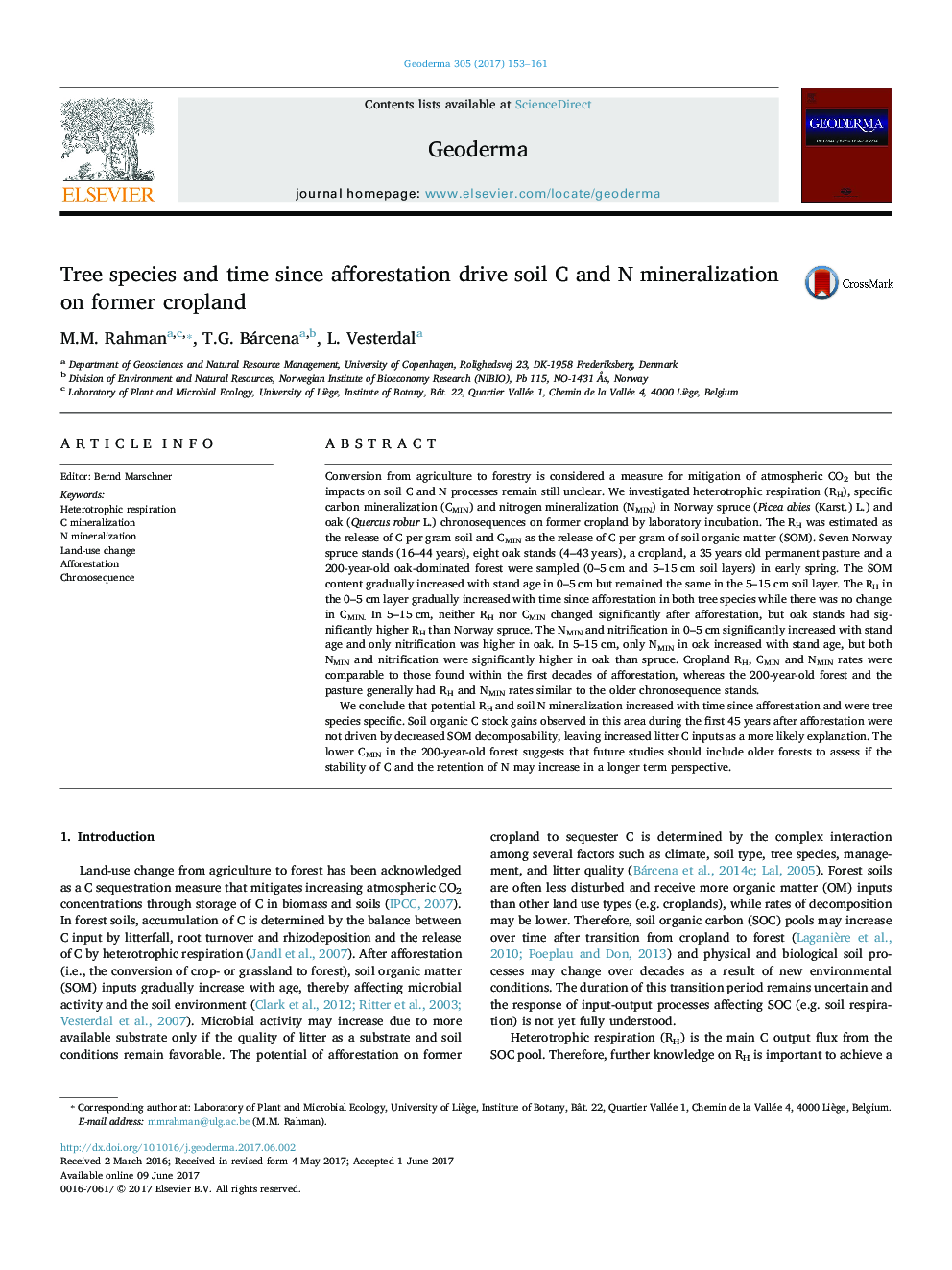| کد مقاله | کد نشریه | سال انتشار | مقاله انگلیسی | نسخه تمام متن |
|---|---|---|---|---|
| 5770285 | 1629412 | 2017 | 9 صفحه PDF | دانلود رایگان |

- Potential RH and soil N mineralization rates increased with time after afforestation.
- CMIN remained unchanged but NMIN increased with stand age.
- RH and N mineralization rates were higher under oak than Norway spruce.
- Land-use change was a stronger driver of N release than tree species.
- SOC gains are not driven by decreased SOM decomposability after afforestation.
Conversion from agriculture to forestry is considered a measure for mitigation of atmospheric CO2 but the impacts on soil C and N processes remain still unclear. We investigated heterotrophic respiration (RH), specific carbon mineralization (CMIN) and nitrogen mineralization (NMIN) in Norway spruce (Picea abies (Karst.) L.) and oak (Quercus robur L.) chronosequences on former cropland by laboratory incubation. The RH was estimated as the release of C per gram soil and CMIN as the release of C per gram of soil organic matter (SOM). Seven Norway spruce stands (16-44Â years), eight oak stands (4-43Â years), a cropland, a 35Â years old permanent pasture and a 200-year-old oak-dominated forest were sampled (0-5Â cm and 5-15Â cm soil layers) in early spring. The SOM content gradually increased with stand age in 0-5Â cm but remained the same in the 5-15Â cm soil layer. The RH in the 0-5Â cm layer gradually increased with time since afforestation in both tree species while there was no change in CMIN. In 5-15Â cm, neither RH nor CMIN changed significantly after afforestation, but oak stands had significantly higher RH than Norway spruce. The NMIN and nitrification in 0-5Â cm significantly increased with stand age and only nitrification was higher in oak. In 5-15Â cm, only NMIN in oak increased with stand age, but both NMIN and nitrification were significantly higher in oak than spruce. Cropland RH, CMIN and NMIN rates were comparable to those found within the first decades of afforestation, whereas the 200-year-old forest and the pasture generally had RH and NMIN rates similar to the older chronosequence stands.We conclude that potential RH and soil N mineralization increased with time since afforestation and were tree species specific. Soil organic C stock gains observed in this area during the first 45Â years after afforestation were not driven by decreased SOM decomposability, leaving increased litter C inputs as a more likely explanation. The lower CMIN in the 200-year-old forest suggests that future studies should include older forests to assess if the stability of C and the retention of N may increase in a longer term perspective.
Journal: Geoderma - Volume 305, 1 November 2017, Pages 153-161